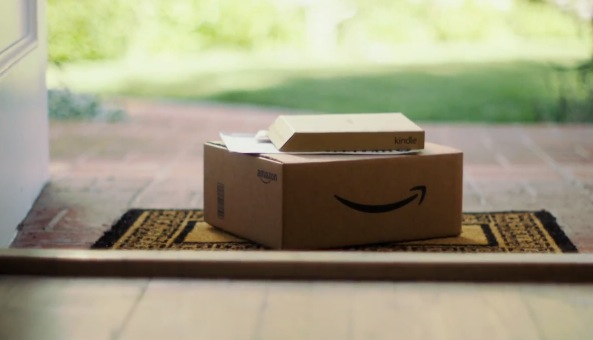The people with the smile on the box had no reason to smile when their company, the online retail giant Amazon, yesterday posted third-quarter results today, reporting its first loss in nine years. Even as revenue increased by 27 percent annually, Amazon lost $274 million during the third quarter on net sales of $13.8 billion, up from $10.9 billion a year earlier.
In the year-ago quarter, Amazon reported a net profit of $63 million. Total operating expenses increased from $10.8 billion to $13.8 billion. Amazon attributed the loss to its investment in online deal site LivingSocial.
It’s also understandable that a low-margin, high-volume nature of Amazon’s content and books businesses affects earnings. The company is also vulnerable to exchange rates, online shopping growth and fluctuations in consumer spending. And in announcing its first-ever loss, Amazon even took jabs at Apple’s iPad in – wait for it – the official press release…
Another thing to factor in: Amazon’s hardware business, which barely breaks even.
CEO Jeff Bezos recently admitted that Kindle devices are sold at cost, with the hope that Amazon will profit from app and media sales.
Surprisingly enough, a media release announcing the earnings draws direct comparison between the Kindle lineup and Apple’s iPad mini, check it out:
Compared to the iPad mini, Kindle Fire HD 8.9” has:
• 193 percent more pixels (2,304,000 pixels vs. 786,432 pixels)
• 56 percent more pixels-per-inch (254 vs. 163)
• watch HD movies and TV – cannot on iPad mini (iPad mini is an SD device)
• better audio with dual stereo speakers and Dolby Digital Plus
• Wi-Fi with dual band, dual antennas + MIMO
• costs $30 less
Compared to the iPad mini, Kindle Fire HD 7” has:
• 30 percent more pixels (1,024,000 vs. 786,432 pixels)
• 33 percent more pixels per inch (216 vs. 163)
• watch HD movies and TV – cannot on iPad mini (iPad mini is an SD device)
• better audio with dual stereo speakers and Dolby Digital Plus
• WiFi with dual band, dual antennas + MIMO
• costs $130 less
That’s an interesting tidbit to have in an earnings release, Amazon. The release also explains Bezos’s logic in selling devices at cost.
Our approach is to work hard to charge less. Sell devices near breakeven and you can pack a lot of sophisticated hardware into a very low price point.
He says the approach is working because the $199 Kindle Fire HD is the #1 bestselling product across Amazon worldwide, both in terms of revenue and unit sales.
The next two bestselling products worldwide are our Kindle Paperwhite and our $69 Kindle. We’re selling more of each of these devices than the #4 bestselling product, book three of the Fifty Shades of Grey series. And we haven’t even started shipping our best tablet – the $299 Kindle Fire HD 8.9” ships November 20.
Amazon last month refreshed the Kindle lineup.
It added a high-end Kindle Fire HD in seven and 8.9-inch flavors, in addition to the new Kindle Paperwhite e-reader and the $69 Kindle. It’s been promoting these tablets like there’s no tomorrow on both the Amazon.com web site and on television.
I happen to love Kindle advertising.
Another one.
http://www.youtube.com/watch?v=LbcwsSZCKuI
This is my favorite, it portrays the Kindle as a sexy competitor.
http://www.youtube.com/watch?v=sulfQHdvyEs
Amazon is definitely facing some serious challenges: on the low end, we have Google’s nicely integrated Nexus 7 tablet, enough to give the Kindle Fire a good run for its money (both start at just $199).
At the same time, Google on October 29 will hopefully announce a rumored bigger Nexus tablet with a ten-inch screen. That device will obviously take on both the iPad and the bigger Kindle Fire HD tablet on the high-end.
On top of that, OEMs are expected to flood the market with dozens of tablets drive by Microsoft’s Windows 8 operating system, which went on sale today alongside the Windows maker’s own Surface RT tablet.
It certainly is going to be a very crowded holiday shopping season tablets-wise.
So, which device stands the best chances of dominating holiday tablet sales?
